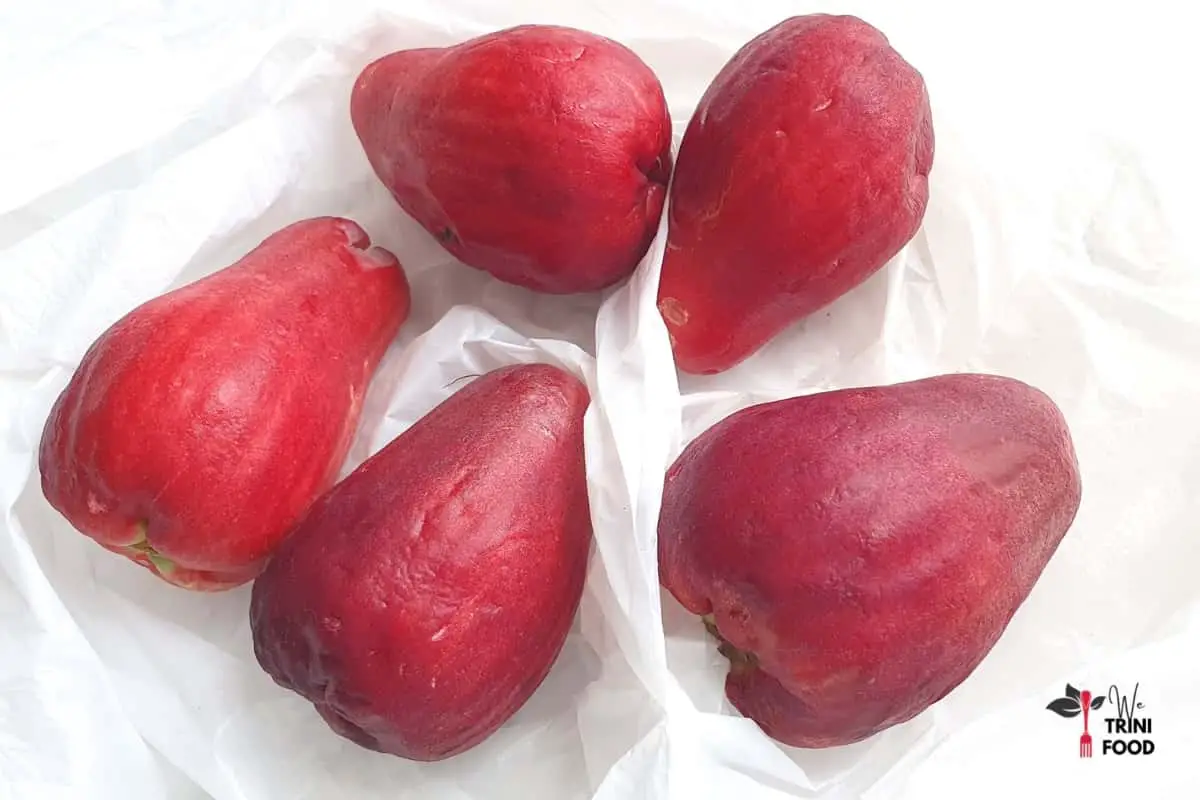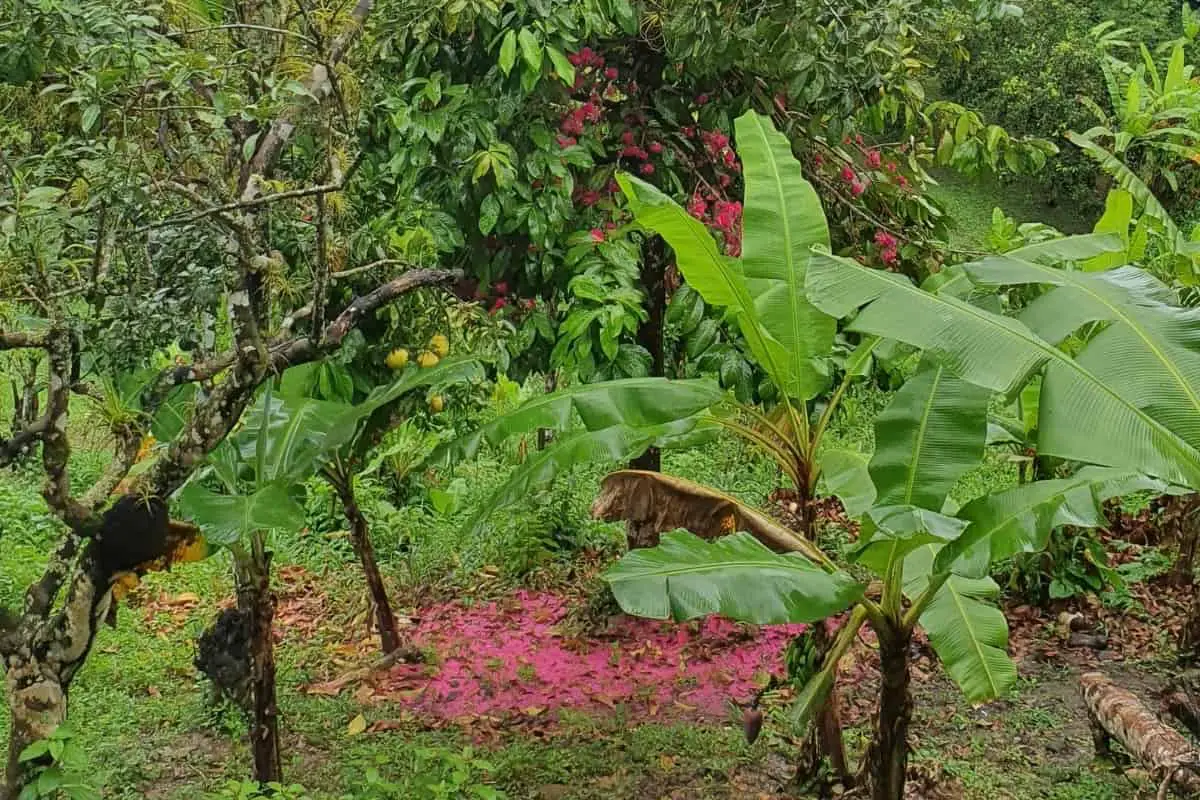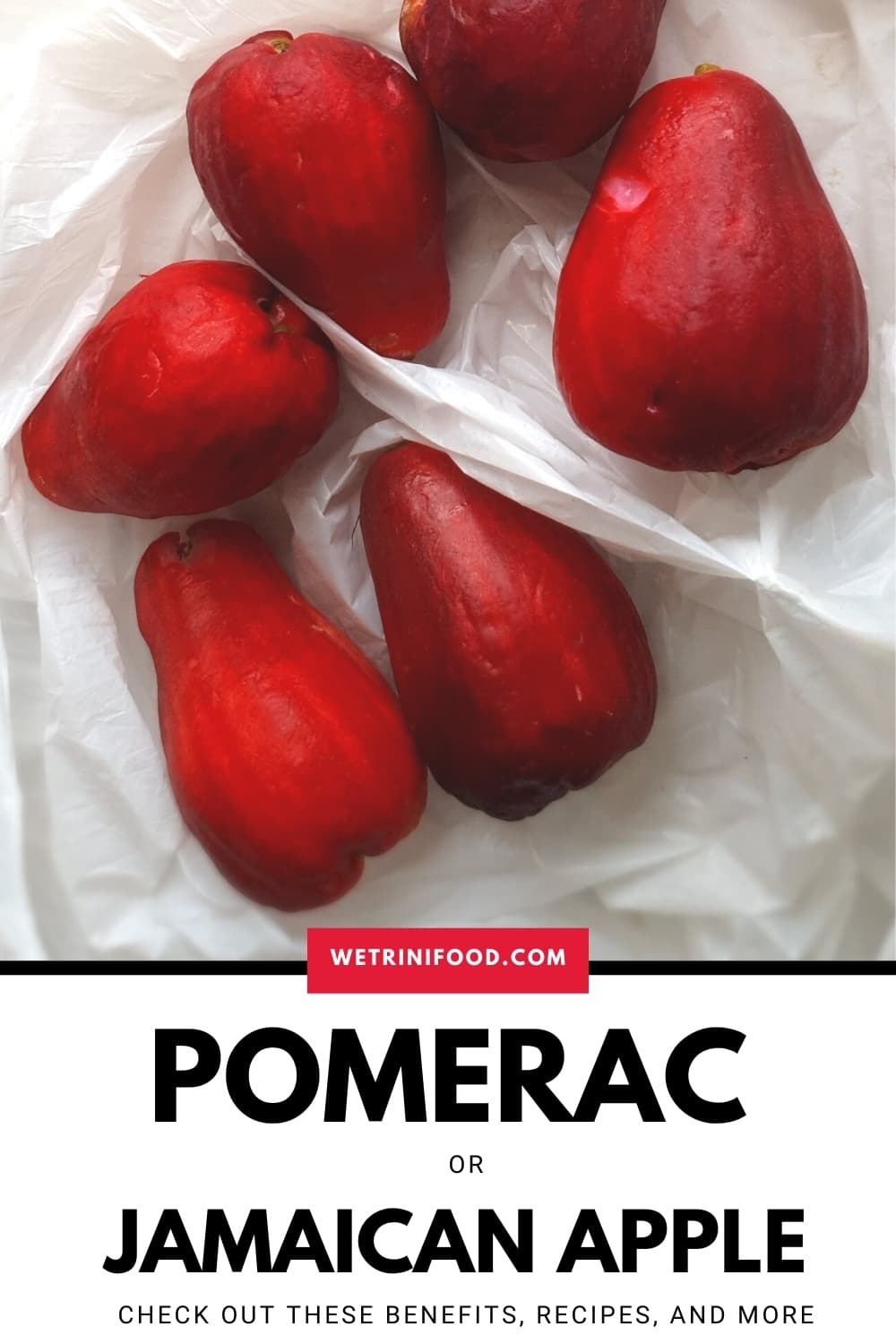Pomerac, Otaheite Apple or Jamaican Apple: Benefits, Recipes and More!
Pomerac is a tasty seasonal fruit in T&T, Jamaica and the wider Caribbean. It is pear-shaped with vibrant red skin and soft, white flesh. The texture is similar to apples and can be eaten in the same way without peeling.
This similarity to apples may be the reason why it is often called Malay apple, rose apple, Otaheite apple or Jamaican apple. Pomerac is actually a derivative of the French Creole “pomme Malac” meaning Malay apple.
Like other fruits with bright red colors, pomerac contains anthocyanins – powerful antioxidants with great benefits. The fruit certainly is worth learning more about.
So, here are some great facts on the fruit, studies that show interesting benefits and a couple recipes to try.
Of course, if you love learning about tropical fruits, check out these on caimite (star apple), chenet (spanish lime) and barbadine (giant granadilla).
Let’s get into it.
What is pomerac
Here’s a look at the fruit:

Pomerac is a pear-shaped tropical fruit that is red to dark red in color when ripe, and contains a single large seed surrounded by white flesh that has a softer, spongier texture than an apple.
It has a delightful, floral, sweet taste.
Its botanical name is Syzygium malaccense and is often called Malay rose apple, mountain apple, pink satin-ash, jambu bol, and Jamaican apple.
The plant is indigenous to the Malaysian region and was likely introduced to the Caribbean during colonial time, much like many other fruit plants in T&T.
Pomerac trees
Germinating the single seed in the fruit is pretty easy. Simply moisten the seed and store in an airtight plastic bag with cotton. It should germinate within a couple days and once a seedling has formed, it can be transferred to soil and eventually planted in the ground.
The tree requires two things – tropical conditions and a lot of space to grow. It is sensitive and needs the tropical heat and rain otherwise it will not survive. The plant also gets really tall – we’re talking about 60 feet or more.
This plant in my aunt’s backyard (behind the banana and citrus) is about 10 years old. And, do you see that beautiful bright pink color on the ground? Those are petals from the flowers! The tree is getting ready to bear.

Pomerac season
The trees usually bear twice per year in February and late May. That means March to June can be considered pomerac season.
Pomerac fruit benefits
It’s predominantly water
Pomerac contains about 90% water by weight. The fruit is a delicious way to boost your hydration, wouldn’t you say? 100 grams of the fruit also contain about 32 Calories.
The fruit has Vitamin C
It also contains good levels of Vitamin C. In 100 grams, the fruit can provide 25% of the daily value you’ll need. But, it is by no means the richest sources of Vitamin C. You’ll have to look at West Indian cherries and guavas for that.
Besides Vitamin C, pomerac has very low levels (less than 3% daily value per 100 grams) of all other vitamins and minerals.
It contains antioxidants
That bright red edible skin contains anthocyanins which are powerful antioxidant compounds.
This 2013 study out of Jamaica found anthocyanins are present in both the pulp and skin of Otaheite apples. But, as the fruit ripens, the antioxidant levels increase in the skin and decrease in the pulp. So, be sure to enjoy that bright red skin!
The leaf is also beneficial
While there aren’t many studies on the benefits of pomerac, there is interesting evidence on the benefits of the leaves of the tree.
This 2019 study found the leaf extracts contain myricetin compounds. These are antioxidant compounds also found in many veggies like tomatoes, fruits, nuts, berries and red wine.
Myricetin has possible anticancer, anti-hyperglycemic, antiviral, antithrombotic and anti-inflammatory benefits.
A 2022 study out of French Polynesia also found the leaf extracts had antibacterial prompts.
Animal studies like this one from 2020 found reduced weight-gain, glucose intolerance, insulin resistance, lipid accumulation in liver and kidney, and better lipid profiles in mice that were fed pomerac leaf extracts while on a high-fat diet.
It may be good for diabetes
Pomerac is predominantly water, contains few calories and has antioxidant compounds like myricetin which may help to lower glucose levels in the blood. Pomerac leaves are also used in traditional medicine to treat diabetes.
Enough of the benefits of pomerac. Let’s turn to what to do with the fruit.
Pomerac recipes
The fruit is mainly enjoyed raw, much like a pear or an apple. But there are a couple interesting recipes you can try.
Pomerac juice
The fruit makes a wonderful juice that can be mixed with berries, apple, ginger and more.
Wash, cut, remove the seed and blend the fruit with a little water. Add whatever other flavorings and sweeteners you like.
Check out this Cocktailz Jamaica video on making one version.
Pomerac chow
When the fruit is in season, pomerac chow is a must.
To make pomerac chow, cut the top off, remove the seed, cut the flesh into bite size pieces and mix the pieces with Caribbean green seasoning, garlic, salt and pepper. Chill for an hour to allow it to marinate. Serve as an afternoon snack.
You can also add other fruit pieces too like mango, papaya, and pineapple.
Otaheite apple tarts and crisps
Due to the similarity in texture to apple, the fruit can be used to make tarts and crisps. This video from Jamrock Vegan is really nice.
Jamaican apple jam
When the fruit is in season, preserve some by making jam. To make the jam, cut and remove the seed, and shred the flesh. Make a thick syrup, add the shredded fruit, grated ginger, and bring to a boil. You can add pectin and acid too in order to thicken the jam.
This video from Next In Food gives a great tutorial.
Pomerac wine
Funny enough, I have this wine in my fridge… a couple years now! It’s pretty good!
What do you make with pomerac? Let me know in the comments!
Pin this:


We love pomerac! Thanks for this article
We had a large Pomerac tree in our backyard which flourished for many years until my father passed away in 1981. It provided great shade and apart from covering the ground with lovely petals, housed many fruit bats which I am sure preyed on many pests such as mosquitoes. We made juices, jams and wine from the pulp so many thanks for sharing and providing the useful links for more information.